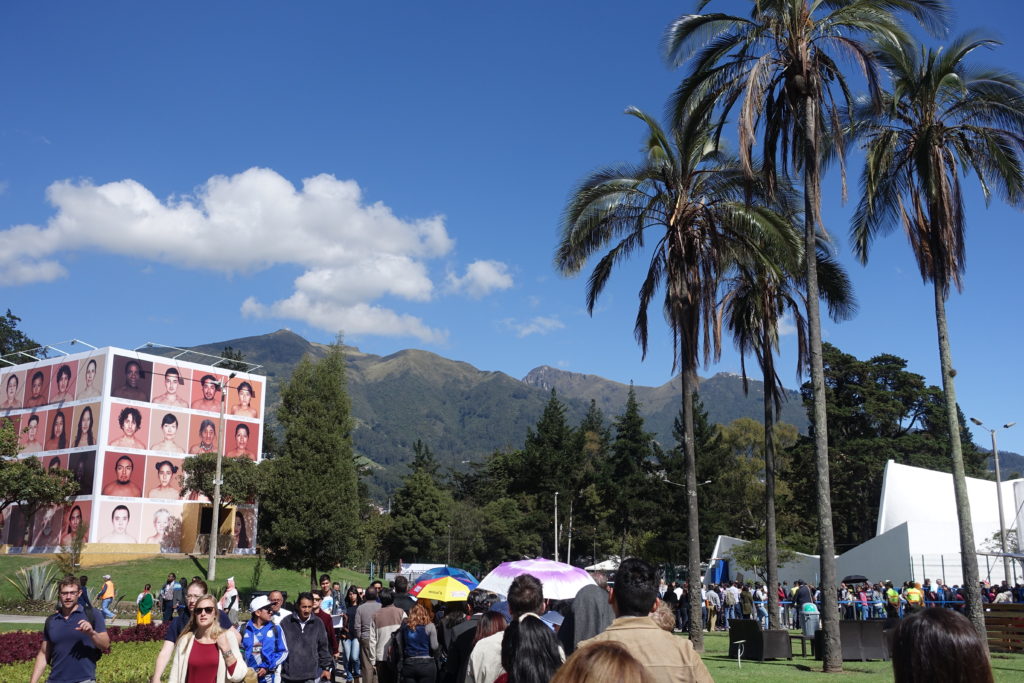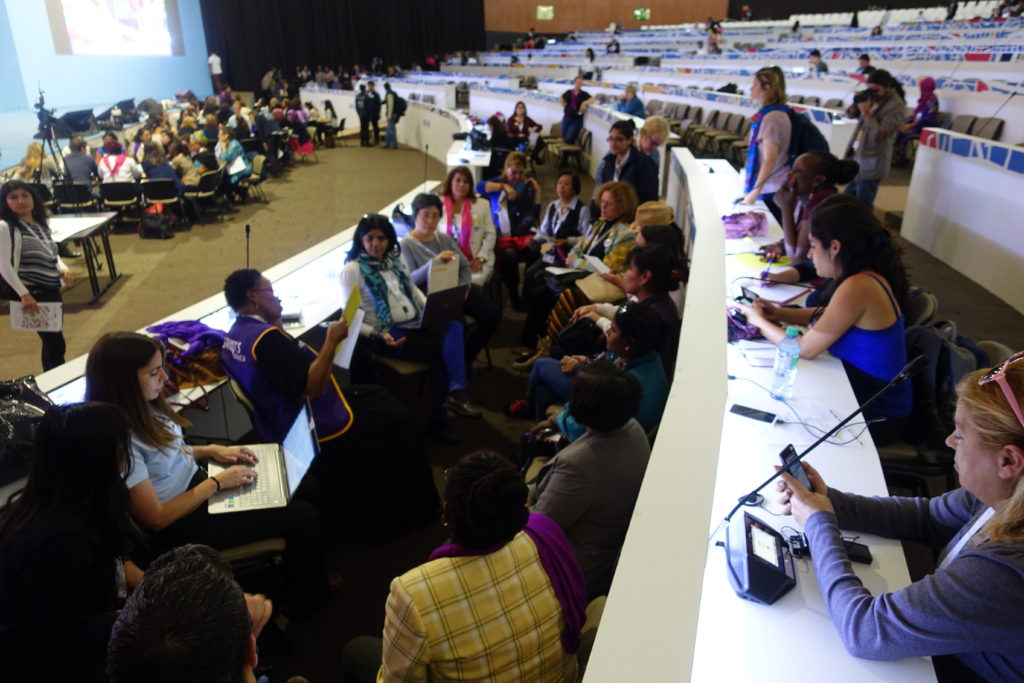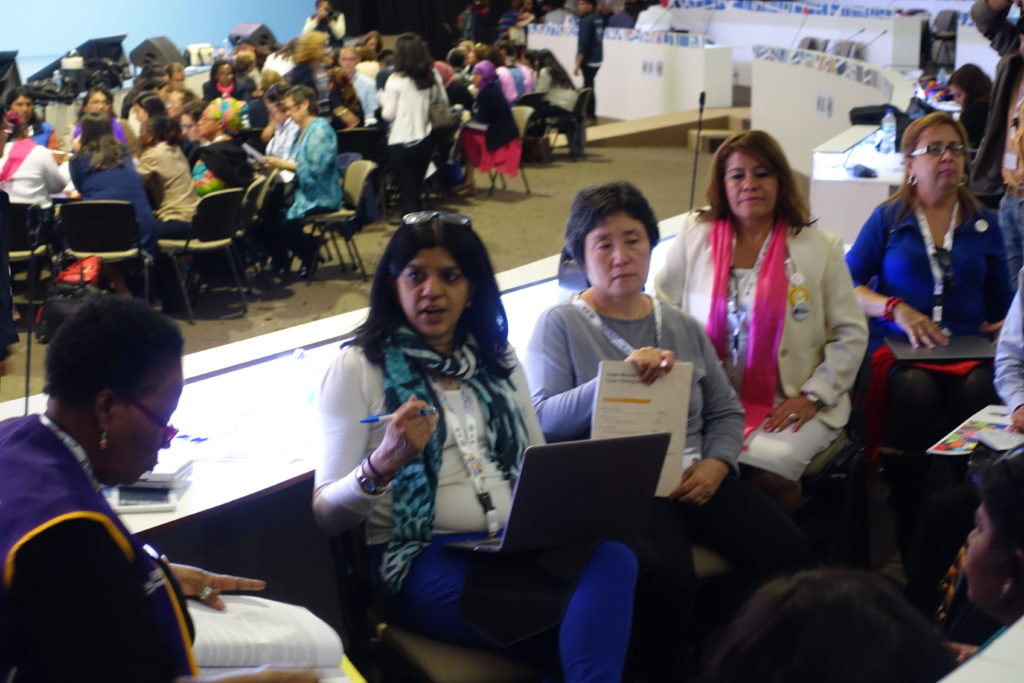
I recently started a new consultancy position with UN Women and as part of my job, I am in Quito, Ecuador, for HABITAT 3, the third United Nations Conference on Housing and Sustainable Urban Development. Tens of thousands of people from around the world are convening to discuss cities.
Today was the Women’s Assembly, “designed to celebrate the contributions to and leadership of the Women and Human Settlements’ movement in championing sustainable and women inclusive urban development.”
In the morning, we heard from various UN leaders and grassroots women about the importance of including women in all efforts. In the afternoon, we divided up into 10 sessions to focus on 10 topics (e.g. economic rights, leadership, and safety). In our groups, in addition to discussing our own experiences and ideas, we came up with recommendations for what needs to happen by member states to ensure women’s views and experiences and needs are included and acted upon.

I was the documenter for the Safe Cities for Women and Girls session. Our session coordinator was Kathryn Travers, Executive Director of Women in Cities International, and she shared this to set the stage:
“Safe cities and safe public spaces free of violence against women and girls are increasingly recognized as a priority issue for sustainable development. The fact that safe cities for women figures explicitly as a goal in the Sustainable Development Goals (SDGs), a binding international commitment by Member States, strengthens its position as a key issue for implementation as part of the New Urban Agenda (NUA), a normative non-binding international framework.
SDG 5, on gender equality and empowerment of all women and girls specifically calls for ending violence against women and girls (VAWG) including in public spaces (sub-target 2). This language is mimicked in the NUA and goes on to include mentions of harassment more specifically in (para 13 c). SDG 11 calls on Member States to Make Cities and Human Settlements Inclusive, Safe, resilient and Sustainable, and sub-target 7 specifies “By 2030, provide universal access to safe, inclusive and accessible, green and public spaces, in particular for women and children, older persons and persons with disabilities”…
The NUA Para 100 calls on Member States to “support the provision of well-designed networks of safe, inclusive for all inhabitants, accessible, green, and quality public spaces and streets, free from crime and violence, including sexual harassment and gender-based violence (…) bringing people into the public spaces, promoting walkability and cycling towards improving health and well-being”. Finally, echoing the SDG 5.5, the NUA calls for the empowerment of women and others to participate in urban and territorial development and decision-making (para 155).”
In this context, these were our collective conclusions:
 We want member states to recognize safety as a right to the city and:
We want member states to recognize safety as a right to the city and:
- Keep women at the center of efforts including by including women as leaders at all levels;
- Collect data at the national level through creative and new methods;
- Learn from new practices that are shared in a central place;
- Have multi-stake holder and multi-level efforts;
- Commit funding to these different initiatives so they can actually happen;
- Monitor and report back on efforts and hold governments (local, national) accountable
On our end, we made four commitments for what we’d be do to ensure these outcomes.
- We commit to making available the knowledge, tools, successful practices as part of comprehensive rights-based approaches, and key experts (both professional and grassroots women) to national, regional, state and local governments to implement safe cities for women and girls initiatives in cities. Support and capacity building for both grassroots leaders and government stakeholders will be offered as part of this commitment.
- Recognizing the special vulnerabilities that girls and young women face, we commit to support girls’ empowerment through processes including intergenerational dialogues to speak for themselves and transform their cities to be safer and more inclusive for all girls and women.
- We commit to innovating participatory action research tools, including technology, and approaches for gender transformative and inclusive safe cities for women and girls initiatives and making them available to cities worldwide
- We commit to implement safe cities initiatives that recognize women and girls as essential agents of change in a multi-stakeholder, multi-sectoral and multi-level partnership informed by existing global frameworks on safe cities free of violence against women and girls that can be adapted to city and country context.
